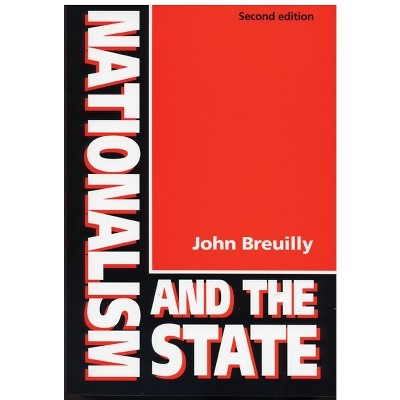Sponsored

The Violence of Colonial Photography - by Daniel Foliard (Paperback)
$18.70Save $18.25 (49% off)
In Stock
Eligible for registries and wish lists
Sponsored
About this item
Highlights
- SHORTLISTED FOR THE BRITISH ACADEMY BOOK PRIZE FOR GLOBAL CULTURAL UNDERSTANDING 2023 The late nineteenth century witnessed a rapid increase in colonial conflicts throughout the French and British empires.
- About the Author: Daniel Foliard is a Professor of Modern History at Université Paris Cité and author of Dislocating the Orient: British Maps and the Making of the Middle East, 1854-1921
- 368 Pages
- History, Modern
Description
About the Book
This book offers a new account of the development of conflict photography. It explores how the new technology of the camera was used in the British and French empires as a means of controlling subject populations, and how these populations found ways of turning the technology against their oppressors.Book Synopsis
SHORTLISTED FOR THE BRITISH ACADEMY BOOK PRIZE FOR GLOBAL CULTURAL UNDERSTANDING 2023
The late nineteenth century witnessed a rapid increase in colonial conflicts throughout the French and British empires. It was also the period in which the first mass-produced cameras became available. Colonial authorities were quick to recognise the power of this new technology, which they used to humiliate defeated opponents and project an image of supremacy across the world. Drawing on a wealth of visual materials, from soldiers' personal albums to the collections of press agencies and government archives, The violence of colonial photography offers a new account of how conflict photography developed in the decades before the First World War. It explores the ways the camera was used to impose order on subject populations in Africa and Asia and to generate propaganda for the public in Europe, where a visual economy of violence was rapidly taking shape. At the same time, the book reveals how photographs could escape the intentions of their creators, offering a means for colonial subjects to push back against oppression.Review Quotes
Shortlisted for the British Academy Book Prize for Global Cultural Understanding 2023
'The violence of colonial photography is a really impressive, meticulously researched book... We are asked to consider colonial albums to look at what was captured and what was erased, and to think about how the act of photography itself shaped the violence.'Fatima Manji, Channel 4 news broadcaster, British Academy Book Prize judge 'I am happy to warmly recommend this book to those interested in how photography has shaped debates about the colonial world and how the visual influences our world view.'
Nathaniel Gardner, Amerika 'A compelling account of photography as an instrument of British and French imperialisms. Daniel Foliard offers a rich, albeit disturbing, history of how the production, dissemination and circulation of photographic depictions of symbolic and literal violence enabled and justified colonial power.'
Ali Behdad, author of Camera Orientalis: Reflections on Photography of the Middle East 'The photographic archives of colonial expansion and the tainted ways of looking they have engendered have never been read with such thoughtful sensitivity, compassion and insight. Foliard powerfully exposes the role of the camera in colonial violence, even as he enjoins us to attend with care to the brutalised bodies and the people whose images confront us in this chilling and illuminating book.'
Marianne Hirsch, co-author of School Photos in Liquid Time: Reframing Difference Praise for the French edition 'In this brilliant study, Daniel Foliard delivers a subtle history of violence and its representations. Steamships, quinine, the machinegun: to these instruments of western colonial conquest at the end of the nineteenth-century we must now add the camera. Such is the lesson of Combat, punish, photograph, which is dedicated to images of violence from the pre-1914 imperial world ... After closing this powerful and demanding book, you'll never look at photos of violence, whether historical or contemporary, in the same way again.'
André Loez, Le Monde 'Drawing on fascinating research in the British and French archives, [the author] recounts the creation of war photography in a colonial context. With great precision, he shows how the expeditions of the years 1890 to 1914 - the inaptly named "little wars" - radically transformed the representation of the suffering of others ... Far from being sensationalist, the book, which appears in the new series "Histoire-monde" from Editions La Découverte, is a rigorous demonstration of the combined power of Kodak and empire.'
Sylvain Venayre, L'Histoire '...in its exceptional scope, nuance and sophisticated linking of histories of photography and violence, this book is a landmark publication in the field and must surely be the go-to for a comprehensive study of early colonial conflict photography.'
Will Fysh, H-France Review
About the Author
Daniel Foliard is a Professor of Modern History at Université Paris Cité and author of Dislocating the Orient: British Maps and the Making of the Middle East, 1854-1921Dimensions (Overall): 9.4 Inches (H) x 6.7 Inches (W) x 1.0 Inches (D)
Weight: 1.95 Pounds
Suggested Age: 22 Years and Up
Number of Pages: 368
Genre: History
Sub-Genre: Modern
Publisher: Manchester University Press
Format: Paperback
Author: Daniel Foliard
Language: English
Street Date: November 15, 2022
TCIN: 85804068
UPC: 9781526163318
Item Number (DPCI): 247-12-8712
Origin: Made in the USA or Imported
If the item details aren’t accurate or complete, we want to know about it.
Shipping details
Estimated ship dimensions: 1 inches length x 6.7 inches width x 9.4 inches height
Estimated ship weight: 1.95 pounds
We regret that this item cannot be shipped to PO Boxes.
This item cannot be shipped to the following locations: American Samoa (see also separate entry under AS), Guam (see also separate entry under GU), Northern Mariana Islands, Puerto Rico (see also separate entry under PR), United States Minor Outlying Islands, Virgin Islands, U.S., APO/FPO
Return details
This item can be returned to any Target store or Target.com.
This item must be returned within 90 days of the date it was purchased in store, shipped, delivered by a Shipt shopper, or made ready for pickup.
See the return policy for complete information.











